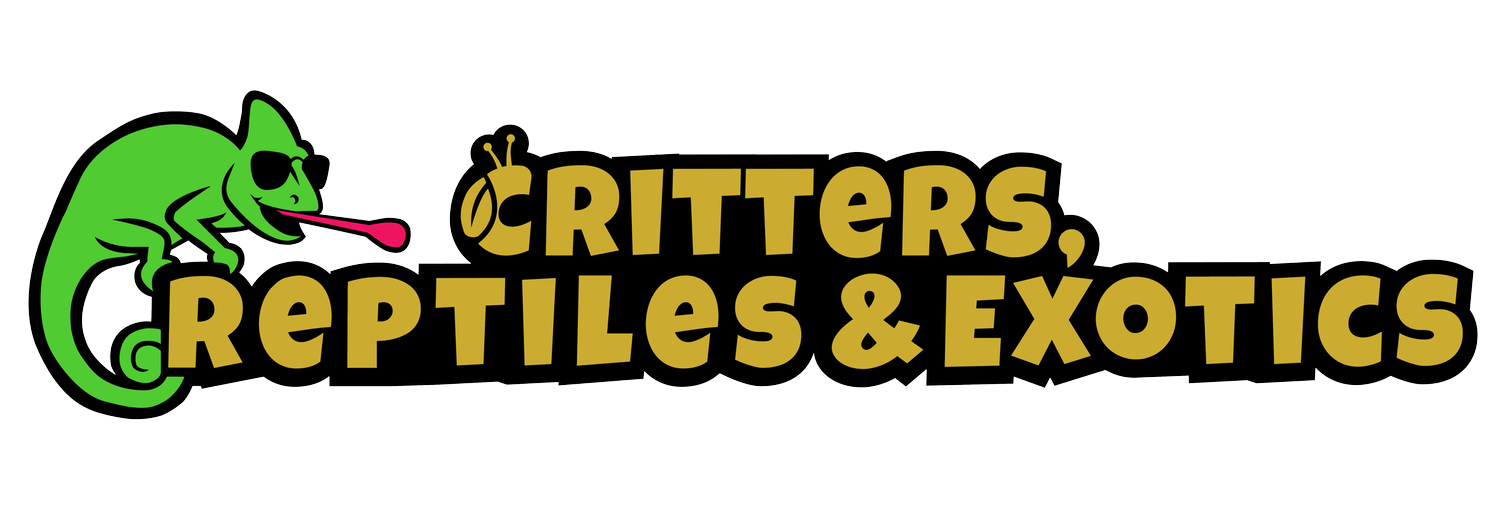Leopard Gecko Care
Lifespan:
15-20 years in captivity.
Sexing:
Sexing can be done around 6-8 months of age. Males exhibit a V-shaped row of pre-anal pores and hemipenal bulges near the base of the tail, while females lack these features.
Enclosure:
Juveniles: 10-20 gallon horizontal terrarium (minimum 24"x12"x12")
Adults: 40 gallon horizontal terrarium (minimum 36"x12"x18")
Substrate:
We recommend using a loose substrate mix that closely mimics their natural arid habitat, such as a blend of sand and clay. This allows the Leopard Gecko to dig and behave naturally.
Lighting & Temperature:
Basking Area: 88-92°F.
Ambient Temperature: 75-85°F.
Cool Side: 70-75°F.
UVB Lighting: A 5.0 UVB bulb is recommended.
Humidity:
Leopard Geckos thrive in a low-humidity environment, ideally between 30-40%. Provide a humid hide with moist sphagnum moss to assist with shedding.
Food:
Leopard Geckos are insectivores, feeding on a diet of gut-loaded insects such as crickets, mealworms, and dubia roaches. Feed young geckos daily and adults every 2-3 days.
Water:
Always provide a shallow dish of fresh, clean water. Leopard Geckos will drink from the dish and may soak to hydrate their skin.
Supplementation:
Calcium with D3: Dust food 2-3 times weekly.
Calcium without D3: Use on alternating days if adequate UVB lighting is provided.
Multivitamins: Offer once weekly to support overall health.
Can I get a Leopard Gecko near me?
Leopard Geckos are a classic for a reason — hardy, handleable, and full of charm, they’re perfect for both first-time reptile owners and longtime keepers looking for a reliable companion. If you're in Jefferson County, WV, or over in Loudoun County, VA, you're only a short trip away from Critters, Reptiles & Exotics in Frederick, Maryland. We regularly have Leopard Geckos for sale, along with everything you need for the ideal setup — from heating and hides to healthy feeder insects. There’s always a new adventure waiting at Critters, Reptiles & Exotics!

